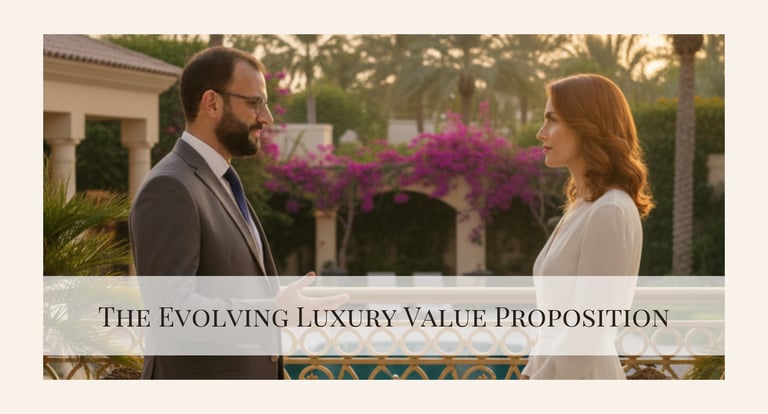The Evolving Luxury Value Proposition
10/30/20252 min read


The contemporary consumer market is characterized by a specific paradox in value creation. Traditional luxury, often associated with genuine physical scarcity, has evolved into a highly visible marketing strategy. Currently, elements such as "limited edition" releases and large-scale, public waiting lists function as sophisticated mass marketing tools. These tactics are strategically designed to generate perceived urgency and activate consumer interest, often referred to as FOMO (Fear of Missing Out), within the Alpha/Aspirational consumer segment. This phenomenon, which represents manufactured constraint, is objectively termed conspicuous scarcity.
To understand the implications of this modern mechanism, we must begin by examining a prominent instance of an over subscribed waitlist and posing the central question: Is the crowd the real luxury, or is the crowd the problem?
LAYLA: Arnault’s quote is the ultimate distillation of the current market. He says the brand is expressed through the products and the ethical, social, environmental, and cultural actions, all of it creating a living legacy.
AYSSAR: Right. For anyone in the luxury world, expert or aspirational consumer, this is the new strategic blueprint. The old model was simple: Exclusivity plus Price equals Value. That equation is now incomplete.
LAYLA: Exactly. We’ve moved beyond the notion that the product itself is the sole source of value. The product, today, is simply the baseline quality requirement.
AYSSAR: It’s the proof, not the point. If your $10,000 watch is not flawless, the entire brand collapses. But if it is flawless, that only gets you into the game. The real strategic move is in those four areas he mentions: ethical, social, environmental, and cultural.
LAYLA: Those actions, the cultural funds, the heritage restoration, the sustainable sourcing initiatives, that is the move from scarcity value to legacy value. Scarcity is transient; it lasts until the next drop. Legacy, on the other hand, aims for perpetuity.
AYSSAR: Precisely. They are investing in things that cannot be counterfeited or replicated by a fast-fashion brand. You can copy a handbag design, but you cannot copy the endowment of an art foundation or a decade long commitment to preserving a rare leather technique.
LAYLA: And for the consumer, the aspiration shifts, too. You aren't just buying an object; you're buying a small share in a globally recognized ethical and cultural enterprise. You align yourself with that legacy.
AYSSAR: Which brings us back to the original topic of conspicuous consumption. The consumer isn't just flaunting wealth; they're conspicuously flaunting alignment. They are signaling: “I buy things that contribute to the greater good/culture.” That is the new status currency.
LAYLA: It’s smart, sustainable strategy. They are insuring the brand against ethical scrutiny and guaranteeing its relevance for the next fifty years. They’re building a cultural monument, not just an inventory.
AYSSAR: Agreed. The entire industry's strategic focus is now on perpetual contribution. If you want to explore this world, understand that you're no longer joining a market of goods, but a system of enduring cultural and ethical capital.
LAYLA: The product just gives you something shiny to hold while you do it.
-----------------------------------------------------------------------------------------------------
We've traced the metamorphosis of luxury from a game of fleeting exclusivity to a symphony of sustained impact. The modern value proposition isn't merely sold, it's lived, shared, and perpetuated. The consumers, they're no longer chasing shadows of scarcity; they're investing in beacons of legacy.
The question remains for each brand and buyer: Will you join the crowd that builds the monument, or stand outside watching it rise?
The evolution continues, and the true luxury lies in choosing wisely.
